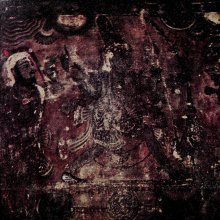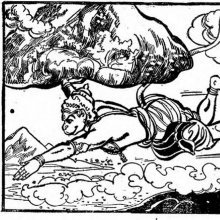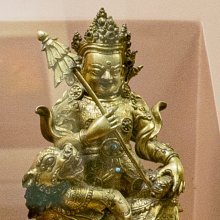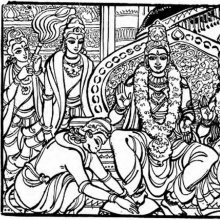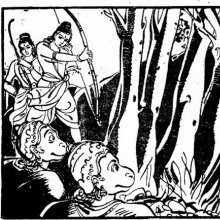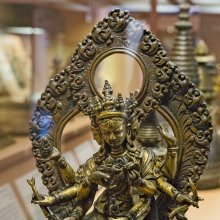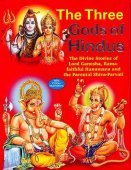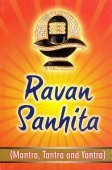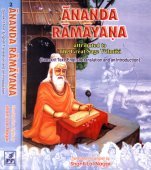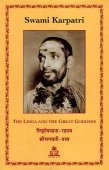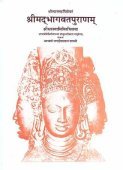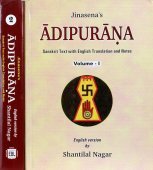Victory: 1 definition
Introduction:
Victory means something in Hinduism, Sanskrit. If you want to know the exact meaning, history, etymology or English translation of this term then check out the descriptions on this page. Add your comment or reference to a book if you want to contribute to this summary article.
Images (photo gallery)
(+7 more images available)
In Hinduism
Purana and Itihasa (epic history)
Source: Shodhganga: Elements of Art and Architecture in the Trtiyakhanda of the VisnudharmottarapuranaVictory was traditionally considered a subject to be studied as a science, as one of the “sixty four kinds of Art”, according to the Kamasutra of Vatsyayana.—Cf. the Sanskrit Vaijayikīna, which refers to “knowledge of science of victory”.—Indian tradition, basically includes sixty four Art forms are acknowledged. The history of Indian Art covers approximately five thousand years which pre sents a rich and almost continuous record. The references of sixty four kinds of Kala (कला, kalā) are found in the Bhagavatapurana, Shaiva-Tantras, Kamasutra of Vatsyayana etc.

The Purana (पुराण, purāṇas) refers to Sanskrit literature preserving ancient India’s vast cultural history, including historical legends, religious ceremonies, various arts and sciences. The eighteen mahapuranas total over 400,000 shlokas (metrical couplets) and date to at least several centuries BCE.
See also (Relevant definitions)
Query error!
Full-text (+1148): Vijaya, Jaya, Jayashabda, Jayavaha, Jayashri, Vinirjaya, Vijayasiddhi, Jayapatra, Jayadhvani, Jayaghosha, Jayakara, Jayastambha, Jita, Vijigishu, Vijiti, Jaitra, Jayajaya, Korravai, Vijayotsava, Jayalakshmi.
Relevant text
Search found 352 books and stories containing Victory, The victory; (plurals include: Victories, The victories). You can also click to the full overview containing English textual excerpts. Below are direct links for the most relevant articles:
The history of Andhra country (1000 AD - 1500 AD) (by Yashoda Devi)
Part 1 - Manda I (A.D. 1114—1118) < [Chapter IV - The Kondapadumatis (A.D. 1100-1282)]
Part 5 - Betaraja II (A.D. 1127-1148) < [Chapter V - The Kotas (A.D. 1100-1270)]
Part 11 - Samrnapanideva or Sarngapani (A.D. 1267) < [Chapter XIV - The Yadavas]
Heimskringla (by Snorri Sturlson)
Part 5 - Harald's Expedition In The Land Of The Saracens (serkland) < [Chapter IX - Saga Of Harald Hardrade]
Part 10 - Of Gunhild S Sons < [Chapter IV - Hakon The Good's Saga]
Part 87 - Battle In Ulfreks-fjord < [Chapter VII - Saga Of Olaf Haraldson]
Parables of Rama (by Swami Rama Tirtha)
Story 142 - The Secret of Invincibility < [Chapter XXII - Success]
Story 173 - Spear with which Jesus was touched < [Chapter XXVIII - Faith In God]
Story 16 - Faith versus Creed < [Chapter III - Faith]
Tipu Sultan < [October – December, 2003]
The Question of Doubt and Faith < [April 1965]
Happiness < [January – March, 2005]
The civilization of Babylonia and Assyria (by Morris Jastrow)
Part III < [Chapter IV - The Gods Of Babylonia And Assyria]
Part V < [Chapter IV - The Gods Of Babylonia And Assyria]
Part III < [Chapter III - Survey Of The History Of Babylonia And Assyria]
Kena Upanishad with Shankara’s Commentary (by S. Sitarama Sastri)
Related products
(+1 more products available)
